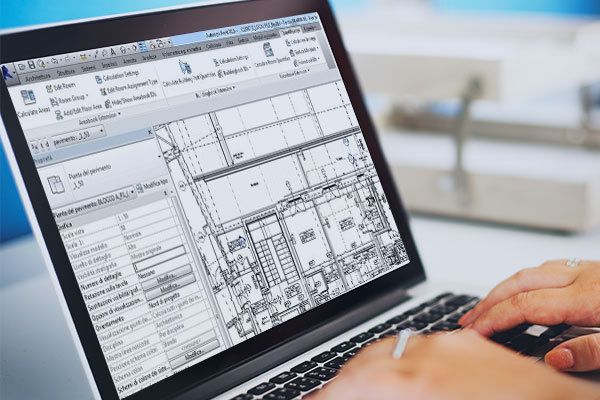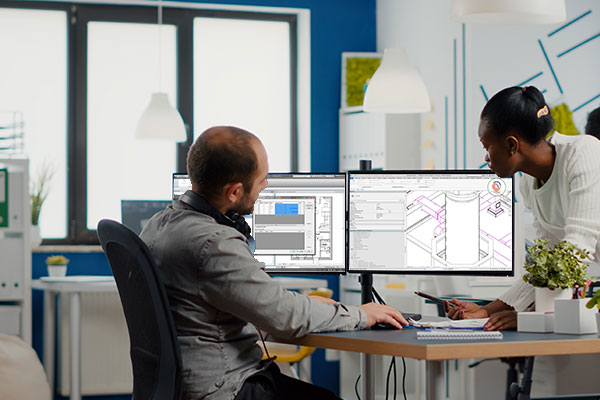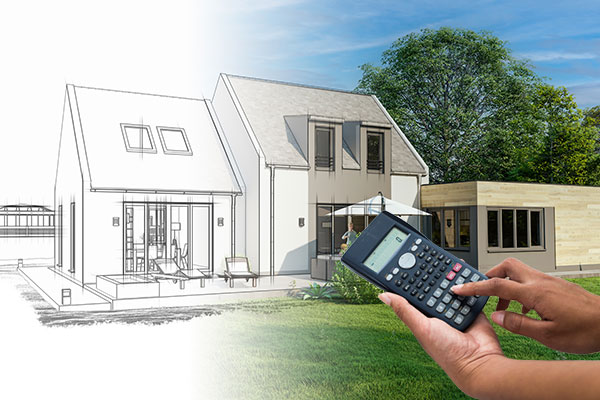Building Information Modeling (BIM) has made the process of project design, estimation, and delivery more efficient. The technology is driving the construction industry towards BIM-based quantity takeoff and estimating.
The introduction of 5D BIM for cost analysis creates an intelligent connection between the 3D model and the cost information of a construction project. And BIM extensions offer a complete quantity takeoff and estimation through room-specific data, comprehensive floor calculation, and other detailed quantification of project materials.
BIM for Accurate Calculation of Building Quantities
3D models developed in BIM are data-rich and intelligent models that can link individual elements to the material it represents in the model. And this intelligence can accelerate the quantity takeoff for a construction project, increasing the estimate accuracy.
5D BIM model by creating an intelligent connection between the 3D BIM model and the cost information of the project results in a 5D information model having attributes to calculate the overall cost of the project. Integration of BIM with a 5D simulation model allows one to view the progress of activities, related costs over time, and updated changes made to the project. 5D BIM results in accurate estimates of material, equipment, and labor.
Use of BIM Extensions for Complete Material Calculation
Even though 5D BIM offers more consistent and accurate cost estimation, it has some implementation challenges. The low LOD of 5D BIM restricts it from extracting detailed data from the 3D model for cost estimation. Application of BIM extension helps get complete material takeoff and quantity calculation. A few of the BIM extensions for complete material calculation are listed below.
Roombook Extension for Revit

Autodesk released the Roombook extension for Revit to fetch more information about rooms in Revit architecture 2011. Roombook extension helps get quantities for room-specific data of the project model that is significant for quantity takeoff analysis. We can fetch and calculate the surface areas of walls, floors, and ceiling elements, room circumferences, and the total number of furnishing elements within a project.
Once we install the Roombook extension, a panel appears in the Add-ins tab of Revit architecture that enables specifying various analysis settings and adding materials that we can use for rooms. Configure settings and then select the ‘Calculate room quantities’ function. The room quantities dialog box displays all the individual element listings for the following items.
- Wall Surfaces
- Floor Surfaces
- Ceiling Surfaces
- Room Circumferences
- Furniture Elements
If we select ‘Furniture elements,’ Revit will list each piece of furniture in each room with the family and type name and quantity.
And when we select ‘wall surfaces,’ Revit provides each wall in and around every room. We get the wall type along with the following information.
- Materials making the wall type’s structure
- Area of the wall
- Height of the wall
- Total area for all walls
- Subarea for each door, window, etc., hosted in the wall
We can add materials like paint, tile, and wallpaper to an analyzed wall without modifying the actual Revit wall family type structure and export the results to a Microsoft Excel spreadsheet or DWF file to get used by Autodesk quantity takeoff.
Areabook Extension for Revit
The Areabook extension helps calculate living and net areas of rooms and by room groups. It calculates a comprehensive floor area calculation through net, gross, and construction floor areas.
In the Areabook extension, we can combine room groups and evaluate by levels, departments, flats, buildings, and building sections. Subareas can be automatically detected and calculated, such as wall columns and wall segments. We can select sub-areas under roofs and stairs based on height lines and calculation factors.
Areabook uses several national standards for calculating areas, i.e., international standards and DIN standards. The DIN standard (Germany) area calculation is according to DIN 277 and WoflV or II.BV.
The following workflow describes the methods to define rooms and calculate areas in the Areabook extension.
- Create rooms and define project standards with calculation settings.
- Define area assignment by room name and calculate the area.
- Edit properties of room and subareas.
- Create room groups and edit properties of room groups
- Choose the floor area, i.e., gross floor area, construction floor area, and net room area, and define their tags in the drawing.
- Export the area calculation in different formats like MS Excel, design web format, CSV, and Revit schedules.
Buildingbook Extension for Revit

Buildingbook extension of Revit aids in the detailed quantification of materials by calculating the material-related quantities of constructive building parts covered under layers and components.
The typical method or workflow for calculating materials-related quantities in the Buildingbook extension includes
- View and change the project standard that determines the specific parameters for calculating and reporting building parts data.
- Edit the project standard calculation setting in the Buildingbook to calculate sub-areas such as the opening of walls, ceilings, floors, and foundations. The international standard does not contain project standard-specific calculation settings. Therefore, we can use the German VOB standard that specifies many rules for calculating quantities.
- Select the elements for building book calculation through a filtering process or manual method. In the filtering process, specify filter elements under selection in the ‘calculate building part quantities’ dialog box. You can also specify another conditional filtering under the range section. And in the manual method, specify categories in ‘Select graphically in the project’ under the selection dialog box.
- Select the calculation type in the ‘Calculate Building part quantities’ dialog box and click on view/edit results to review the calculation data.
- You can edit the properties of the calculated building part and sub-elements.
- Specify the export format and template and include pictures to export the Buildingbook data.
Buildingbook includes country-specific calculation standards. International standards calculate real quantities without additional calculation rules, whereas the VOB standard uses an opening measurement system.
Dynamo Extension in Revit
5D BIM with Dynamo extension helps calculate the quantity for the project components by script. We can use the Dynamo extension in Revit for detailed and accurate quantity takeoff. The dynamo for element quantity takeoff programming consists of the following stages.
- Select the ‘Select Model Elements’ node from the Dynamo library and select the target element in the 3D model.
- Select the ‘Watch’ node to list the detailed code of each item.
- Then, connect the ‘Watch node’ to the ‘Element.’
- We get the parameter value by Name node, and the value of the parameter name is area.
- Select the ‘Math Sum’ node to calculate the total area of the 3D model.
We can use the above programming to fetch other material information, such as ‘the type of material.’ It helps BOQ preparation and decision-making at the early stage of the project.
Building Information Modeling in Material Take-off and Quantity Estimation

Costing is one of the vital aspects of a project, and inaccurate cost estimation in a project can negatively impact the business. BIM-based quantity take-off brings precision to cost estimation and scheduling of the construction process. 5D BIM and BIM extensions can generate more consistent and accurate cost estimations and show a clear project budget and construction progress.
eLogicTech is a BIM service expert and provides detailed and precise BIM materials take-off and cost estimation services to various construction projects. Our BIM experts and skilled engineers perform quantity survey, creates parametric quantity estimation model, and extract vital project information aligned with cost and timelines.







